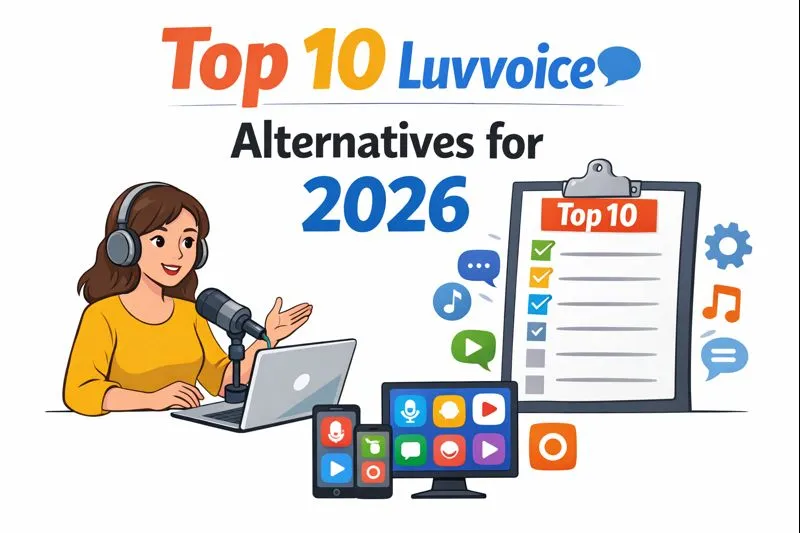Text to Speech Solutions with 200+ Realistic AI Voices in Over 50 Languages
TL;DR
The Rise of Realistic AI Voices in Text-to-Speech
Okay, so remember those super robotic voices from old GPS systems? Yeah, things have changed, and fast.
- TTS technology has come a long way, hasn't it? From sounding like a broken record to actually, well, sounding human.
- AI and deep learning are totally responsible for this jump. They're making voices that have- oh, you know - actual emotion and stuff. (NEW AI Voice Generator Adds Emotions For You! (realistic) - YouTube) This is thanks to complex neural networks that learn to mimic human speech patterns, including intonation, rhythm, and even subtle emotional cues. Acoustic modeling focuses on the physical characteristics of sound like pitch and timbre, while prosody generation deals with the rhythm, stress, and intonation of speech. (AI Voice: Natural Speech Synthesis 2025) The linked video, "AI Knows What You're Feeling...", demonstrates how AI is getting better at understanding and conveying emotions in speech.
- And it's not just about sounding better, but people are way more engaged when the voice doesn't make them wanna scream.
Think about e-learning, right? A realistic voice can keep students hooked, instead of zoning out. Or even in healthcare; imagine a calming ai voice guiding patients through instructions. It's a big deal, really. The integration of speech technologies, as highlighted by discussions on platforms like ExamTopics, means that speech recognition and synthesis are becoming standard features in many settings, contributing to more interactive user experiences.
Unlocking Global Reach: 200+ Voices in 50+ Languages
Now that we've got these incredibly lifelike voices, the next logical step is making sure everyone can hear them. After all, what good is a perfect voice if it can't speak to your entire audience? That's where the 200+ voices in 50+ languages comes in clutch. Seriously, it's kinda mind-blowing.
- Global Reach: Think about it. You're not just talking to the world, you're talking in their language. That's gonna open doors.
- Accessibility Boost: More languages means more people can understand and engage with your stuff. Obvious, right? But it's easy to forget.
- Cultural Nuances Matter: It's not just about translating words, but you need to consider the culture it is intended for. For example, in some cultures, a very direct or informal tone might be perceived as rude, whereas in others, it's perfectly acceptable. Similarly, the appropriate level of politeness or the way certain demographics are addressed can vary significantly. Even regional dialect variations within a single language can impact how well a TTS voice is received.
Imagine a global retail brand using ai powered tts to deliver personalized shopping experiences in every customer's native tongue. Or a healthcare provider offering multilingual support for patients accessing medical information. Talk about inclusivity.
Use Cases Across Industries
Ever wonder how ai is changing the game in audio? It's not just about sounding human, but how it's being used across industries; pretty cool stuff, actually.
Video Production: ai voices are perfect for character narration, explainer videos, and even marketing. Think how much cheaper it is to generate a voiceover than hiring someone, especially for smaller projects.
E-learning: Let's be real, a monotone voice can kill any online course. ai voices are making e-learning more engaging and accessible, especially for students who learns differently.
Audio Content Creation: From podcasts to audiobooks, ai is automating narration. Imagine turning blog posts into audio on the fly.
A related and powerful feature is Speech-to-Speech (STS). As ElevenLabs highlights, STS uses AI to transform existing audio recordings by changing the voice, and even fine-tuning the emotions and tone. This core concept of using AI to essentially "re-voice" audio can be incredibly useful for re-dubbing content or adding a new voice to existing audio projects, further enhancing the versatility of voice synthesis beyond just text.
Customizing Voices
While many TTS solutions offer a wide array of pre-made voices, the ability to customize is becoming increasingly important. This allows users to fine-tune specific aspects of a voice to better match their brand or desired persona. You might be able to adjust the speaking rate, pitch, or even the emotional tone to create a truly unique audio experience.
Key Features to Look For in a TTS Solution
Okay, so you're hunting for the perfect ai voice? It's not just about how it sounds, but how well it plays with others, ya know?
Seamless Integration is Key: You want a tts solution that slides right into your current setup. This means it should easily connect with popular video editing software like Adobe Premiere Pro or Final Cut Pro, e-learning platforms such as Articulate Storyline or Moodle, and audio production tools like Audacity or Pro Tools, without requiring complex workarounds. Integration is often achieved through plugins, software development kits (SDKs) for developers, or by supporting common file export formats.
api Support is a Game-Changer: Got some coding chops? An API lets you automate voice generation. For example, imagine a finance app that reads out stock updates or a retail app that confirms a order, all hands-free. This allows for dynamic, real-time voice output integrated directly into your applications.
Compatibility Matters: Make sure the TTS solution plays nice with different file formats and operating systems. You don't wanna be stuck converting files all day. This includes support for common audio formats like MP3 and WAV, and compatibility across Windows, macOS, and Linux.
The Future of Text-to-Speech Technology
So, where's all this ai voice tech heading anyway? It's not just about sounding human, but what's, like, next level?
- Expect to see even more emotional ai, where voices aren't just reading words but feeling them—or at least sounding like they do. Think voices that can convey sarcasm, joy, or even a bit of sadness, because who doesn't want a slightly depressed virtual assistant? This could mean AI voices that can adapt their tone based on context, like sounding more empathetic when delivering bad news or more enthusiastic during a product announcement.
- tts is going to be everywhere. It'll be baked into your virtual assistants, your smart home devices, even your fridge might start chatting with you. Creepy? Maybe a little, but convenient, right? The drivers behind this widespread integration include advancements in edge computing, which allows for lower latency and processing power on devices, and the increasing demand for intuitive, voice-controlled interfaces. For instance, imagine your smart speaker not just telling you the weather, but offering a friendly, conversational update as you get ready for your day.
- Also, consider accessibility. ai voices can open up possibilities for people with disabilities, from reading assistance to making digital content way easier to navigate.
Think about entertainment; ai could create fully voiced characters for games or interactive stories, making it super immersive. Or in healthcare, imagine ai voices providing personalized, empathetic support to patients.
This diagram highlights key aspects and outcomes of text-to-speech synthesis:
The future also holds exciting possibilities for integration. For example, imagine a financial app that not only displays your account balance but also provides a spoken update in a calm, reassuring voice, letting you know if you're running low on funds. This kind of seamless, voice-enabled interaction, powered by robust APIs, is becoming increasingly common.






